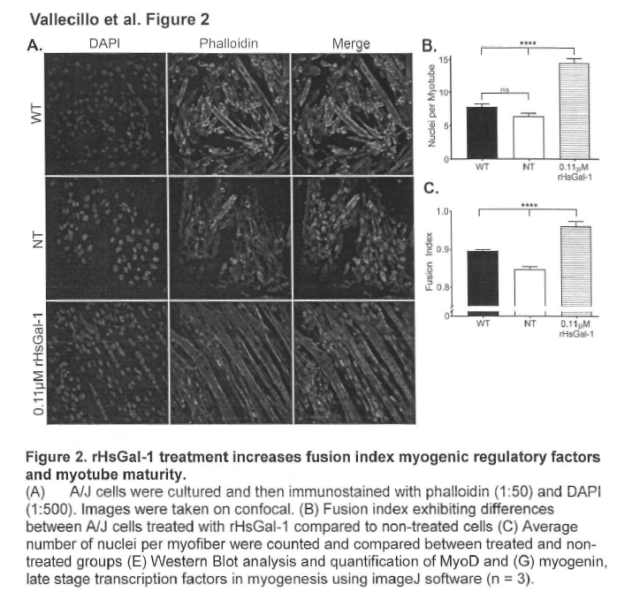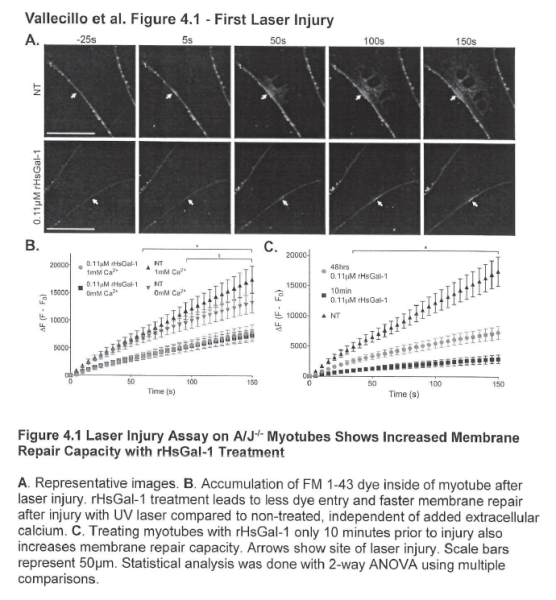ID: 2019-015 Recombinant human Gal-1 treatment improves membrane repair capacity, increases myogenic markers and decreases inflammation in dysferlin deficient myotubes, providing novel evidence regarding how Gal-1 favorably improves muscle function in LGMD2B.
Principal Investigator: Pam Van Ry
Muscular dystrophy is a group of muscle diseases that gradually cause the muscles to weaken, leading to an increasing level of disability. The purpose of this invention is to state the role and therapeutic viability of Galectin-1 in muscular dystrophy and autoimmune diseases. Gal-1 has the potential to increase membrane repair capacity and shift immune homeostasis away from chronic inflammation.
Gaectin-1 (Gal-1) is a small 14.5kDa non-glycosylated, soluble galactoside binding protein expressed by many different tissues with concentration dependent monomeric and homo-dimeric structures which determine functionality. Gal-1 interactions have been shown to induce diverse physiological activities. One of the limitations of prior research using Gal-1 as a therapeutic is that neither the mechanism or initiated pathway of repair, nor the efficacious biochemical requirement of Gal-1 were identified. The crystal structure of Gal-1 reveals that a monomeric unit is composed of a beta sandwich consisting of two anti-parallel beta-sheets of five and six strands with the N and C terminal at the dimer interface, opposite of the carbohydrate recognition domain (CDR). The CDR within the family of Galectins are highly conserved and is composed of a negatively charged clef. There are deferential interaction and resultant activities associated with the CDR or the N/C terminal interface of Galectin-1. The dimer is relatively stable due to interactions between its hydrophobic core and the non-covalent N/C terminal interface of Galectin-1. Our results show that recombinant human Galectin-1 treatment improves membrane repair capacity, increases myogenic markers and decreases inflammation in dysferlin deficient myotubes, providing novel evidence regarding how Galectin-1 favorably improve muscle function in limb girdle muscular dystrophy type 2B (LGMD2B).
About the Market:
The main applications of this technology are in muscle dystrophy and autoimmune disorders.
For more information, contact BYU Tech Transfer at 801-422-6266
Links and Resources




